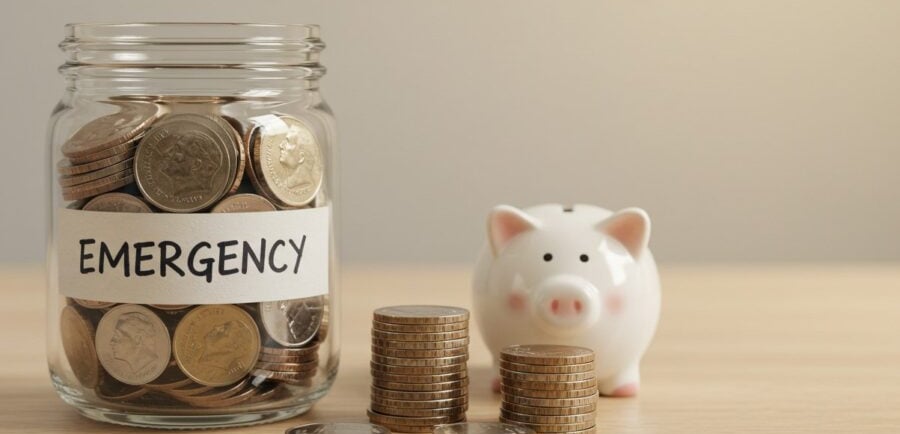How to Build an Emergency Fund in 6 Months
Learn practical steps to save an emergency fund quickly and securely. Protect yourself from unexpected expenses and gain peace of mind.
2/6/20253 min read


How to Build an Emergency Fund in 6 Months
Unexpected expenses happen medical bills, car repairs, sudden job changes. An emergency fund gives you peace of mind and protects you from financial stress. The good news: with the right plan, you can build a solid emergency fund in just six months.
Below is a simple, realistic plan you can start today. All amounts are shown in USD ($) so your site stays globally neutral and AdSense friendly.
Step 1 — Pick a Clear Goal (Know the Number)
First, decide how big your fund should be. A common target is 3–6 months of essential expenses. If your essential monthly costs (rent, utilities, groceries, transport) are $1,200, then:
3 months = $3,600
6 months = $7,200
For a 6-month fund in 6 months, divide your target by 6. If your target is $7,200, you need to save $1,200 per month.
Tip: If $1,200/month is too high, start with a 3-month goal or extend the time consistency matters more than speed.
Step 2 — Track Your Current Spending (Know Where It Goes)
You can’t redirect money if you don’t know where it’s going. Track all your expenses for one month even small purchases: coffee, delivery fees, subscriptions.
Tools that help:
Google Sheets (simple, customizable)
Mint or PocketGuard (automated categorization)
After tracking, list the top 5 places you spend the most. Those are the highest-impact areas to trim.
Step 3 — Automate the Savings (Out of Sight, Out of Mind)
Automating transfers is the single best habit to form. The moment you get paid, an automatic transfer should move the monthly savings amount to a separate account.
Example automation plan:
Paycheck → $1,200 moved automatically to Emergency Savings on payday.
If you get paid twice a month, split transfers: $600 twice.
Why it works: Automation removes choice and temptation. Treat your savings like a recurring bill pay it first.
Step 4 — Cut or Reallocate Non-Essentials (Fast Wins)
Find quick wins to free up cash:
Cancel unused subscriptions (streaming, apps). Even three $10 subscriptions = $360/year.
Reduce dining out by 50% for 6 months. If you spend $200/month on eating out, cutting to $100 saves $600 in 6 months.
Sell unused items (clothes, gadgets) a one-time $200–$500 boost.
Redirect all savings directly into the emergency account.
Step 5 — Add a Side Income Boost (Optional but Powerful)
If your budget gap is big, add a small side hustle for 3–6 months:
Freelance gigs (writing, design, tutoring) $100–$500/week possible.
Gig apps (delivery, rideshare) flexible hours for extra cash.
Sell digital services or a mini course.
Even an extra $200–$400 per month reduces the pressure significantly and speeds you to your goal.
Step 6 — Use High-Yield, Separate Accounts
Keep your emergency fund in a separate account so it’s not accidentally spent. Use a high-yield savings account or money market account to earn some interest while you wait.
Avoid keeping emergency money in checking; make it slightly inconvenient to withdraw to discourage impulse use (but not impossible in true emergency).
Step 7 — Build Milestones & Celebrate Small Wins
Break the big number into monthly and weekly milestones:
If you need $7,200 in 6 months → $1,200/month → $300/week.
Celebrate every $1,000 milestone (small reward: a modest treat from your fun fund).
Recognizing progress keeps you motivated. Share milestones with a friend for accountability.
Step 8 — Review Every Month and Adjust
Life changes raise or lower transfers as needed. Each month, review:
Did you hit the transfer?
Any surprise expenses?
Can you increase savings by 5–10% next month?
If you find you consistently can’t hit the target, re-evaluate the timeline or add temporary side income.
Common Questions
Q: What counts as an emergency?
A: Major unplanned expenses medical bills, urgent car or home repairs, or job loss. Daily coffee or planned vacations are not emergencies.
Q: Should I pay debt or save first?
A: Build a small starter emergency fund ($500–$1,000) first, then aggressively pay high-interest debt while maintaining small automatic savings. Once debt is under control, increase emergency contributions.
Quick 6-Month Example Plan
Target: $6,000 (6 months at $1,000/month)
Automation: $500 twice a month → $1,000 total
Expense cuts: Cancel $30/month subscriptions = $180 saved in 6 months
Side hustle: Earn an extra $200/month → $1,200 in 6 months
Result: $1,000 × 6 + $180 + $1,200 = $7,380 (goal reached with buffer)
Conclusion
Building an emergency fund in six months is doable with a clear goal, automation, small lifestyle shifts, and if needed extra income. Protect yourself from life’s surprises and gain real peace of mind by starting now.
Want more help? Read: 5 Simple Ways to Boost Your Savings Without Sacrificing Fun it pairs perfectly with this plan.
